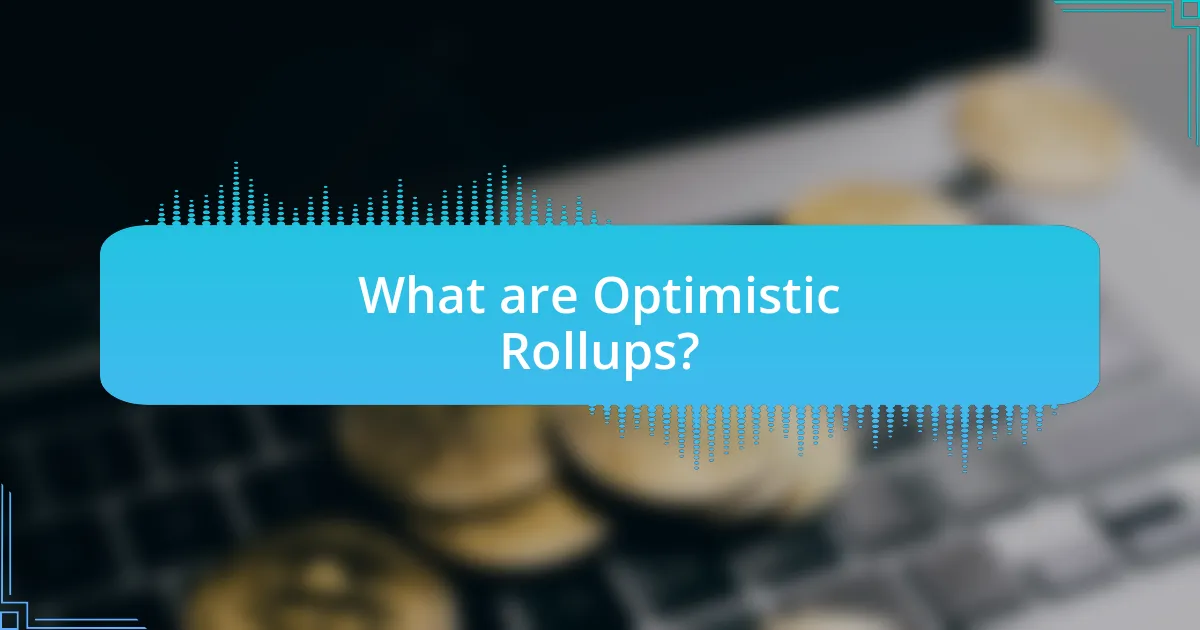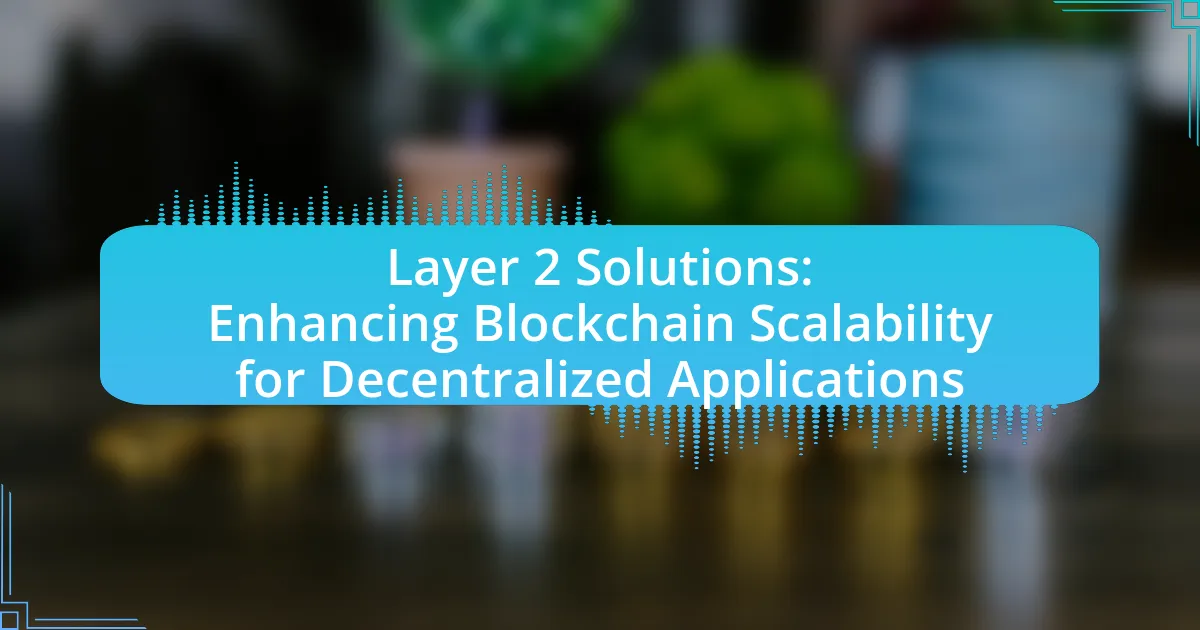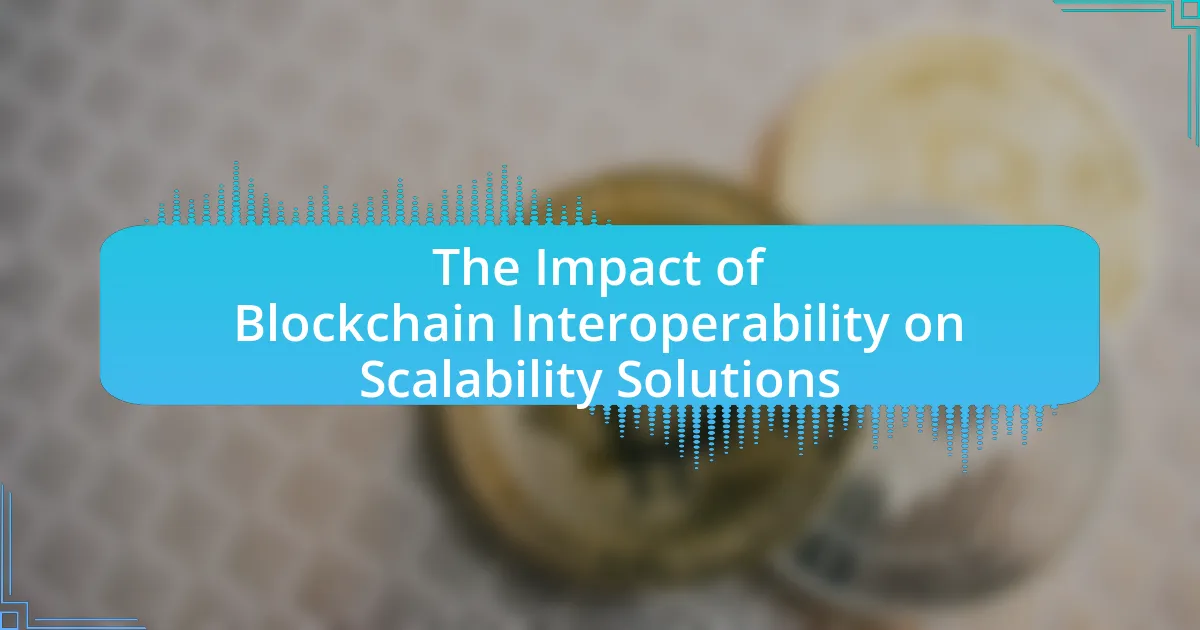Rollups are Layer 2 scaling solutions designed to enhance transaction efficiency on blockchains by bundling multiple transactions into a single batch for processing on the main chain. This article explores two primary types of Rollups: Optimistic Rollups and ZK-Rollups, detailing their mechanisms, advantages, and challenges. Key features such as off-chain processing, data compression, and transaction validation methods are examined, highlighting how each type improves scalability and reduces costs. Additionally, the article discusses the implications of regulatory concerns and offers guidance for developers in selecting the appropriate Rollup type for their projects.

What are Rollups and Why are They Important for Efficient Transactions?
Rollups are Layer 2 scaling solutions that bundle multiple transactions into a single batch, which is then processed on the main blockchain. They are important for efficient transactions because they significantly reduce the load on the main chain, leading to lower fees and faster processing times. For instance, Ethereum’s rollups can increase transaction throughput by up to 100 times compared to processing each transaction individually on the main chain. This efficiency is crucial for enhancing user experience and enabling decentralized applications to scale effectively.
How do Rollups enhance transaction efficiency?
Rollups enhance transaction efficiency by aggregating multiple transactions into a single batch, which reduces the amount of data that needs to be processed and stored on the blockchain. This batching process minimizes the computational load on the main chain, allowing for faster transaction confirmations and lower fees. For instance, Optimistic Rollups can process thousands of transactions off-chain and submit only the final state to the main chain, significantly increasing throughput. ZK-Rollups, on the other hand, utilize zero-knowledge proofs to validate transactions off-chain, ensuring security while also compressing data, which further optimizes efficiency. This combination of techniques leads to a more scalable and cost-effective transaction environment on blockchain networks.
What are the key features of Rollups that contribute to efficiency?
Rollups enhance efficiency through features such as data compression, off-chain processing, and reduced on-chain transaction load. Data compression minimizes the amount of data that needs to be stored on the blockchain, allowing for more transactions to be processed in a single batch. Off-chain processing enables the execution of transactions outside the main blockchain, which alleviates congestion and speeds up transaction times. Additionally, by bundling multiple transactions into a single on-chain submission, Rollups significantly decrease the overall number of transactions that need to be recorded on the blockchain, thereby lowering costs and improving throughput. These features collectively contribute to a more efficient transaction process in blockchain networks.
How do Rollups compare to traditional transaction methods?
Rollups significantly enhance transaction efficiency compared to traditional methods by aggregating multiple transactions into a single batch, thereby reducing on-chain data and costs. Traditional transaction methods, such as those used in Bitcoin or Ethereum, process each transaction individually, leading to higher fees and slower confirmation times, especially during peak network usage. For instance, Ethereum’s average transaction fee can exceed $10 during congestion, while rollups can lower this cost to a fraction by processing thousands of transactions off-chain and submitting only the final state to the main chain. This batching mechanism not only improves scalability but also maintains security, as rollups inherit the security properties of the underlying blockchain.
What are the different types of Rollups?
The different types of Rollups are Optimistic Rollups and Zero-Knowledge (ZK) Rollups. Optimistic Rollups assume transactions are valid by default and only check for fraud when challenged, which allows for faster processing. In contrast, ZK Rollups use cryptographic proofs to validate transactions off-chain, ensuring that only valid transactions are added to the blockchain, enhancing security and efficiency. Both types aim to improve scalability and reduce transaction costs on blockchain networks.
What distinguishes Optimistic Rollups from ZK-Rollups?
Optimistic Rollups and ZK-Rollups are distinguished primarily by their approach to transaction validation. Optimistic Rollups assume transactions are valid by default and only challenge them if fraud is suspected, relying on a dispute resolution mechanism. In contrast, ZK-Rollups utilize zero-knowledge proofs to validate transactions off-chain, ensuring that only valid transactions are added to the blockchain without the need for challenges. This fundamental difference leads to varying trade-offs in terms of speed, security, and scalability, with ZK-Rollups generally providing stronger security guarantees due to their cryptographic proofs.
How do the mechanisms of each Rollup type function?
Optimistic Rollups function by assuming that transactions are valid and only verifying them when a challenge is raised, which allows for faster processing and lower costs. In this mechanism, transactions are bundled off-chain and submitted to the main blockchain, where they are validated through a fraud-proof system if disputes arise. Conversely, ZK-Rollups utilize zero-knowledge proofs to validate transactions off-chain before submitting them to the main blockchain, ensuring that only valid transactions are recorded, which enhances security and scalability. This mechanism allows ZK-Rollups to provide immediate finality and reduce the need for on-chain verification.

What are Optimistic Rollups?
Optimistic Rollups are a layer 2 scaling solution for blockchains that enhance transaction throughput by processing transactions off-chain while relying on the main chain for security. They assume that transactions are valid by default and only require proof of fraud if a dispute arises, which significantly reduces the computational load on the main chain. This approach allows for faster and cheaper transactions, as seen in implementations like Optimism and Arbitrum, which have demonstrated increased efficiency in Ethereum’s ecosystem by enabling thousands of transactions per second while maintaining the security of the underlying blockchain.
How do Optimistic Rollups operate?
Optimistic Rollups operate by processing transactions off-chain while assuming that all transactions are valid by default. This mechanism allows for increased scalability and reduced costs, as only the final state of the transactions is submitted to the main blockchain. In the event of a dispute, a challenge period is initiated where users can submit proofs to contest the validity of the transactions. This design relies on the assumption that fraud is rare, thus optimizing performance while maintaining security through the ability to verify transactions when necessary.
What assumptions do Optimistic Rollups make about transaction validity?
Optimistic Rollups assume that most transactions are valid and only a small fraction are fraudulent. This assumption allows them to process transactions off-chain while relying on a challenge mechanism to dispute invalid transactions. The validity of transactions is presumed unless proven otherwise, which significantly enhances scalability and efficiency. This model is supported by the design of Ethereum’s Optimistic Rollup framework, which emphasizes low-cost transaction processing while maintaining security through the ability to challenge and verify transactions when necessary.
What are the potential risks associated with Optimistic Rollups?
The potential risks associated with Optimistic Rollups include the possibility of fraud, delayed finality, and reliance on challenge periods. Fraud risk arises because Optimistic Rollups assume transactions are valid by default, requiring users to challenge incorrect transactions within a specified timeframe. This reliance on user vigilance can lead to losses if fraudulent transactions go unchallenged. Delayed finality occurs as users must wait for the challenge period to expire before transactions are confirmed, which can hinder user experience and liquidity. Additionally, the challenge mechanism may introduce complexities and potential vulnerabilities, as it relies on the assumption that users will actively monitor and contest invalid transactions.
What are the advantages of using Optimistic Rollups?
Optimistic Rollups offer significant advantages, primarily in scalability and cost-effectiveness. They enable higher transaction throughput by processing transactions off-chain while relying on the Ethereum mainnet for security. This architecture reduces congestion on the main chain, allowing for faster and cheaper transactions. Additionally, Optimistic Rollups utilize a fraud-proof mechanism, which means that transactions are assumed valid unless proven otherwise, further enhancing efficiency. According to research by the Ethereum Foundation, Optimistic Rollups can achieve up to 100 times the throughput of Ethereum’s base layer, demonstrating their effectiveness in improving transaction efficiency.
How do Optimistic Rollups improve scalability?
Optimistic Rollups improve scalability by processing transactions off-chain while relying on the Ethereum main chain for security and finality. This approach allows for a significant increase in transaction throughput, as multiple transactions can be bundled and executed in a single batch, reducing the load on the main chain. For instance, Optimistic Rollups can achieve throughput of thousands of transactions per second compared to Ethereum’s base layer, which typically handles around 15 transactions per second. This scalability enhancement is achieved through the use of fraud proofs, which ensure that any incorrect transactions can be challenged and corrected, maintaining the integrity of the system without sacrificing speed.
What cost benefits do Optimistic Rollups provide?
Optimistic Rollups provide significant cost benefits by reducing transaction fees and increasing throughput compared to traditional Layer 1 solutions. They achieve this by bundling multiple transactions off-chain and submitting a single proof to the main blockchain, which minimizes the amount of data processed on-chain. This method allows for lower gas fees, as users only pay for the aggregated transaction rather than each individual transaction. Additionally, Optimistic Rollups can handle a higher volume of transactions, leading to improved scalability and efficiency, which further reduces costs associated with congestion and delays on the main chain.

What are ZK-Rollups?
ZK-Rollups are a layer 2 scaling solution for blockchains that use zero-knowledge proofs to bundle multiple transactions into a single proof, which is then submitted to the main blockchain. This method enhances transaction throughput and reduces costs while maintaining security and privacy, as the underlying data remains off-chain. ZK-Rollups can process thousands of transactions per second, significantly improving scalability compared to traditional on-chain transactions. The use of zero-knowledge proofs ensures that the validity of the transactions can be verified without revealing any sensitive information, thus providing both efficiency and confidentiality.
How do ZK-Rollups function?
ZK-Rollups function by bundling multiple transactions into a single proof, which is then submitted to the blockchain. This process utilizes zero-knowledge proofs to verify the correctness of the transactions without revealing their details, ensuring both scalability and privacy. The rollup contracts maintain the state of the transactions off-chain while only the proof and minimal data are stored on-chain, significantly reducing the amount of data processed by the main blockchain. This method allows for thousands of transactions to be processed efficiently, as evidenced by Ethereum’s implementation of ZK-Rollups, which can handle up to 2,000 transactions per second compared to the main chain’s limit of around 30 transactions per second.
What role do zero-knowledge proofs play in ZK-Rollups?
Zero-knowledge proofs are essential in ZK-Rollups as they enable the verification of transactions without revealing any underlying data. This cryptographic technique allows ZK-Rollups to bundle multiple transactions into a single proof, which is then submitted to the blockchain, ensuring scalability and privacy. By using zero-knowledge proofs, ZK-Rollups maintain the integrity of the transaction data while significantly reducing the amount of information that needs to be processed on-chain, thus enhancing efficiency and security.
How do ZK-Rollups ensure transaction privacy and security?
ZK-Rollups ensure transaction privacy and security by utilizing zero-knowledge proofs, which allow for the verification of transactions without revealing any underlying data. This cryptographic technique enables the rollup to bundle multiple transactions into a single proof, which is then submitted to the main blockchain. The proof confirms the validity of the transactions while keeping the details confidential, thus maintaining user privacy. Additionally, ZK-Rollups enhance security by minimizing the amount of data stored on-chain, reducing the attack surface and potential vulnerabilities associated with exposing transaction details.
What are the benefits of ZK-Rollups compared to Optimistic Rollups?
ZK-Rollups offer several benefits over Optimistic Rollups, primarily in terms of security and efficiency. ZK-Rollups utilize zero-knowledge proofs, which allow for immediate verification of transactions without requiring a challenge period, thus enhancing security against fraud. In contrast, Optimistic Rollups assume transactions are valid and only check them if challenged, which can lead to delays and potential vulnerabilities during the challenge period. Additionally, ZK-Rollups can achieve higher throughput and lower latency due to their ability to bundle and verify transactions off-chain, resulting in reduced on-chain data requirements. This efficiency is supported by the fact that ZK-Rollups can process thousands of transactions in a single proof, while Optimistic Rollups may require more extensive on-chain interactions.
How do ZK-Rollups enhance security and fraud prevention?
ZK-Rollups enhance security and fraud prevention by utilizing zero-knowledge proofs to validate transactions off-chain while ensuring that only valid transactions are included on-chain. This mechanism allows for the verification of transaction correctness without revealing any underlying data, significantly reducing the risk of fraud. Additionally, ZK-Rollups aggregate multiple transactions into a single proof, which minimizes the attack surface and enhances the overall security of the blockchain network. The cryptographic guarantees provided by zero-knowledge proofs ensure that any fraudulent activity can be detected and invalidated, thereby maintaining the integrity of the system.
What scalability advantages do ZK-Rollups offer?
ZK-Rollups offer significant scalability advantages by enabling off-chain transaction processing while maintaining on-chain security. This approach allows for a higher throughput of transactions, as multiple transactions can be bundled together and verified with a single proof, reducing the load on the main blockchain. For instance, ZK-Rollups can process thousands of transactions per second compared to traditional on-chain methods, which typically handle only a limited number. Additionally, the cryptographic proofs used in ZK-Rollups ensure that the validity of transactions is confirmed without revealing the underlying data, enhancing privacy and efficiency. This combination of increased transaction capacity and reduced on-chain data requirements exemplifies the scalability benefits of ZK-Rollups in blockchain technology.
What are the challenges faced by both Optimistic and ZK-Rollups?
Both Optimistic and ZK-Rollups face significant challenges related to security, scalability, and user experience. Optimistic Rollups rely on fraud proofs, which can lead to delays in transaction finality as users must wait for a challenge period to ensure correctness. This can result in slower user experiences during high-demand periods. ZK-Rollups, while offering faster finality through zero-knowledge proofs, encounter challenges in computational complexity and the need for advanced cryptographic techniques, which can limit scalability and increase costs. Additionally, both types of rollups require robust integration with existing blockchain ecosystems, which can complicate deployment and interoperability.
What are the technical limitations of each Rollup type?
Optimistic Rollups face limitations such as reliance on fraud proofs, which can lead to delays in transaction finality, as the challenge period allows for disputes. Additionally, they require a trust assumption that the majority of validators will act honestly, which can be a vulnerability. ZK-Rollups, on the other hand, have limitations including the complexity of generating zero-knowledge proofs, which can result in higher computational costs and longer processing times. Furthermore, ZK-Rollups may face challenges in interoperability with existing smart contracts due to their unique proof systems. These limitations highlight the trade-offs between scalability, security, and complexity inherent in each Rollup type.
How do regulatory concerns impact the adoption of Rollups?
Regulatory concerns significantly hinder the adoption of Rollups by creating uncertainty around compliance and operational frameworks. These concerns arise from the need for adherence to existing financial regulations, which can complicate the deployment of Rollups in various jurisdictions. For instance, regulations regarding data privacy, anti-money laundering, and securities laws can impose restrictions that limit the functionality and scalability of Rollups. Furthermore, the lack of clear regulatory guidelines can deter developers and investors from engaging with Rollup technologies, as they may fear potential legal repercussions or financial penalties. This hesitance is evident in the cautious approach many blockchain projects take when integrating Rollups, as they seek to navigate the complex regulatory landscape while ensuring compliance and fostering user trust.
How can developers choose between Optimistic and ZK-Rollups for their projects?
Developers can choose between Optimistic and ZK-Rollups based on their project’s specific requirements for scalability, security, and transaction finality. Optimistic Rollups are generally easier to implement and offer faster transaction speeds, making them suitable for applications that prioritize speed and lower costs. In contrast, ZK-Rollups provide stronger security guarantees through zero-knowledge proofs, which ensure that transactions are valid without revealing underlying data, making them ideal for applications requiring high security and privacy. The choice ultimately depends on the trade-offs between speed, cost, and security that align with the project’s goals.
What factors should be considered when selecting a Rollup type?
When selecting a Rollup type, key factors include scalability, security, transaction costs, and compatibility with existing infrastructure. Scalability determines how well the Rollup can handle increased transaction volumes; for instance, ZK-Rollups can process thousands of transactions per second due to their efficient proof generation. Security is crucial, as Optimistic Rollups rely on fraud proofs, which can introduce vulnerabilities if not monitored effectively. Transaction costs vary between Rollup types, with ZK-Rollups generally offering lower fees due to their efficient data compression. Lastly, compatibility with existing blockchain ecosystems influences the ease of integration and user adoption, as some Rollups may be better suited for specific platforms.
What best practices can developers follow when implementing Rollups?
Developers should prioritize security, scalability, and user experience when implementing Rollups. Ensuring robust security measures, such as thorough audits and testing, protects against vulnerabilities inherent in smart contracts. Scalability can be enhanced by optimizing transaction batching and minimizing on-chain data, which is crucial for maintaining efficiency. Additionally, focusing on user experience by providing clear interfaces and seamless interactions encourages adoption. These practices are supported by industry standards and successful implementations, such as those seen in Ethereum’s Layer 2 solutions, which demonstrate the effectiveness of these strategies in real-world applications.

















